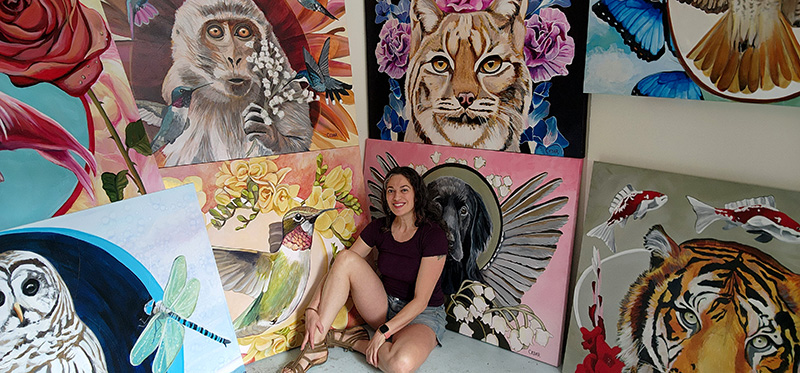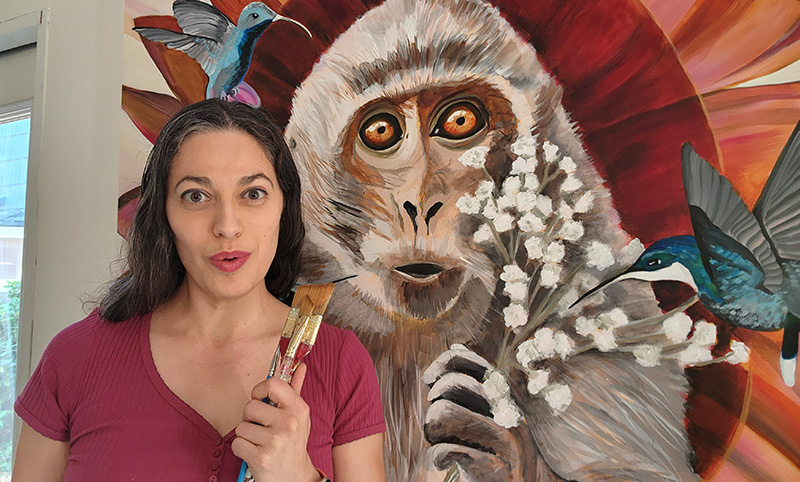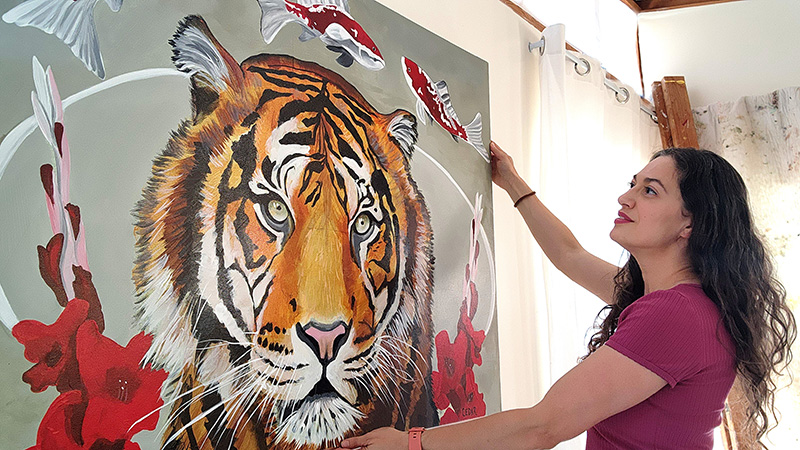Archetype Collection
Each of these paintings represents one of twelve character archetypes, shown through the symbolism of flora and fauna. I chose to paint animals and plants that humans have associated with various character traits. Some of these symbols are shared across different world cultures, others less-so.
With this intention applied to the details of each design, the resulting images are powerful. Even if the viewer does not understand the intended symbolism behind each of these art pieces, the images are appealing and thought-provoking.
Viewers aware of the symbolism behind each piece will find joy and inspiration in dwelling upon these paintings. Perhaps looking at each image will help awaken that part of your character a little bit, reminding you of a well within yourself that you can tap into when needed. Perhaps you’ll recognize these archetypes in your social relationships—how you relate to others as well as how they see you—and appreciate the richness and complexity of the human family
The Hero
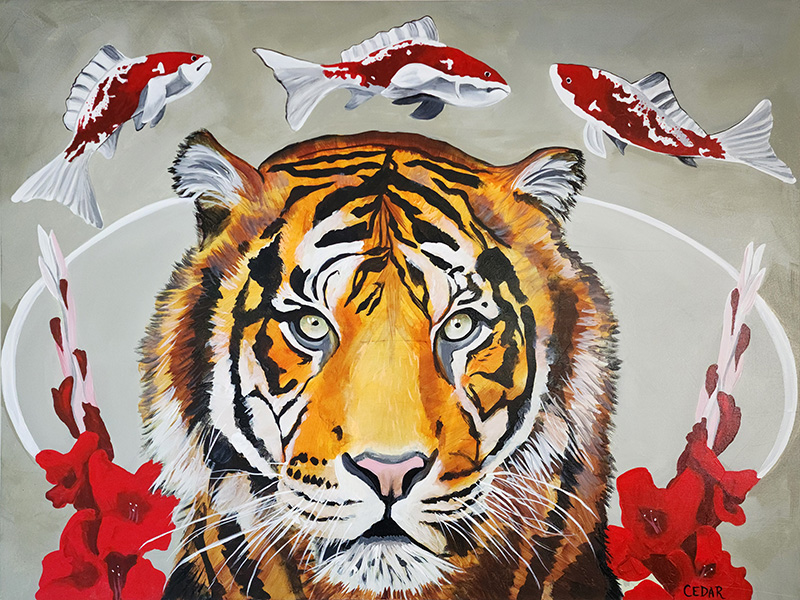
The Hero: Proves their worth through courageous action.
The brave tiger, as well as koi fish, are symbols of courage. The koi fish are red, as are the gladiolus flanking the tiger like a warrior’s pointy spears. Red is an energetic color that represents strength, courage and action.
The Lover
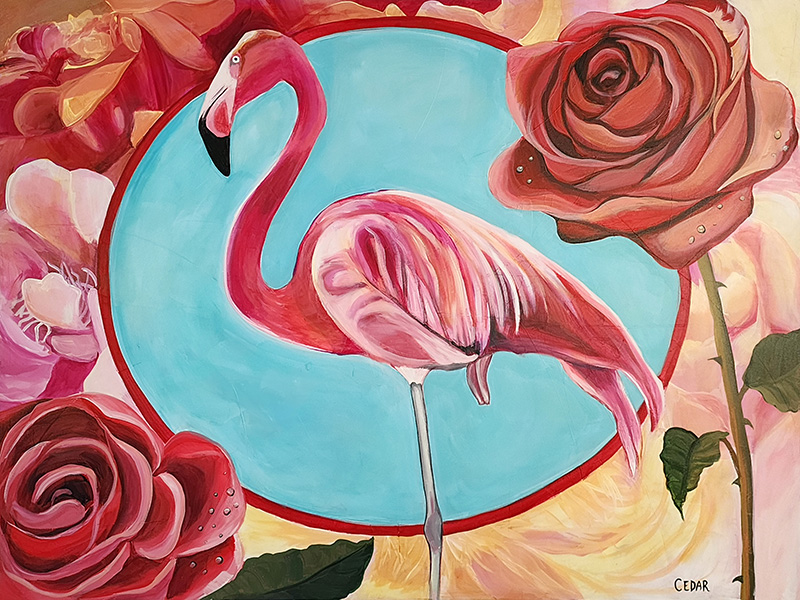
The Lover: Shares intimacy and sexual pleasure.
Many animals have been used to symbolize romantic love, but the pink flamingo, with its glorious plumage and elegantly curved neck, is a particularly beautiful one. Red roses and peony roses are enduring symbols of love and passion. The colors of the pink flamingo and the red flowers together convey the heat of intense emotion.
The Sage
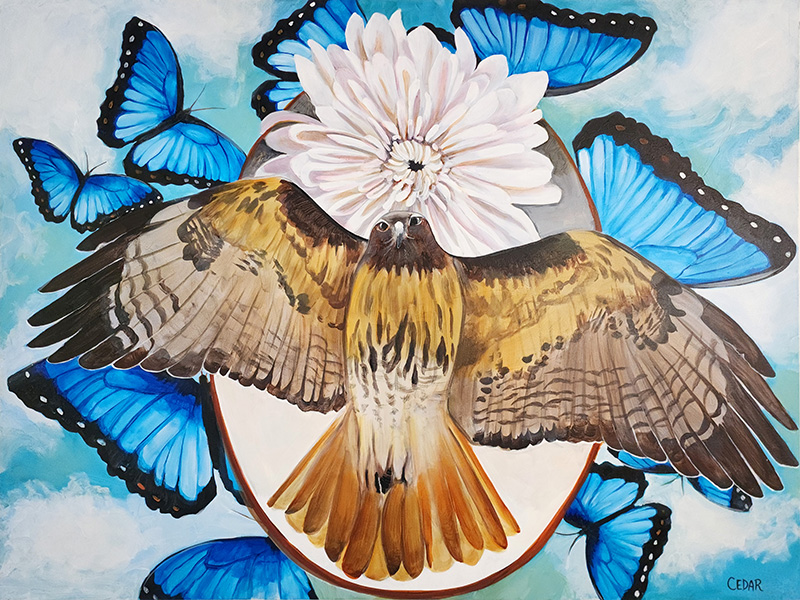
The Sage: Studies, learns, and discovers truth.
The Sage represents the accumulation of wisdom through scholarly pursuit. The idea of the expansion of the mind through knowledge—spreading your wings—is shown with a red-tailed hawk flying in a blue sky. In the background is a circle of blue morpho butterflies. Blue represents knowledge, integrity, and seriousness. The white chrysanthemum is a symbol of intelligence. The many tiny petals surrounding the heart of the flower are like layers of knowledge and understanding.
The Innocent
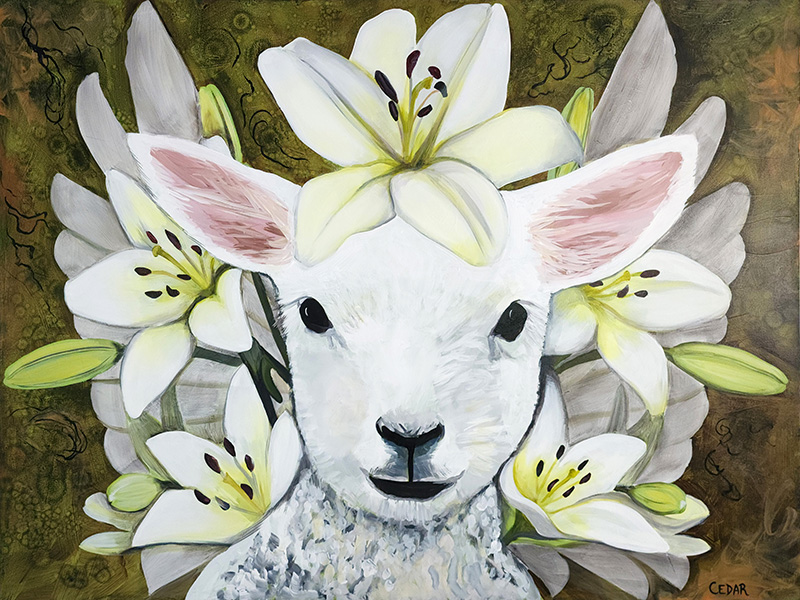
The Innocent: Experiences paradise and bliss.
A newborn lamb represents innocence and purity. The wings of a white dove are spread out in the background. A corona of white lilies surrounds the baby animal, and the green background represents the budding of fresh new life.
The Jester
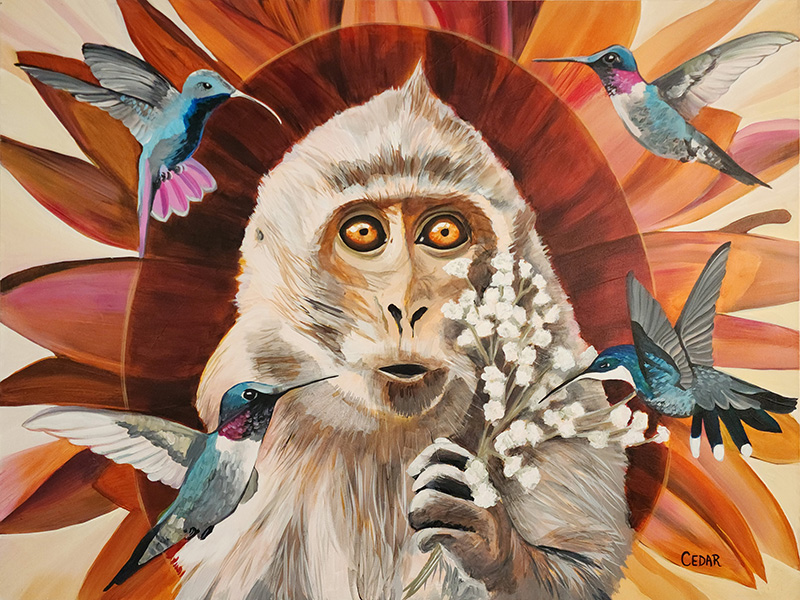
The Jester: Lives in the moment, enjoys life, has fun.
The Jester has a spirit of fun, represented by a monkey. Hummingbirds represent playfulness, showing flashes of colorful feathers as they flit around from flower to flower with lightness and speed. The monkey holds a spray of baby’s breath, a flower that represents festivity and fun. The sunflower filling the background symbolizes the Jester’s sunny disposition.
The Caregiver
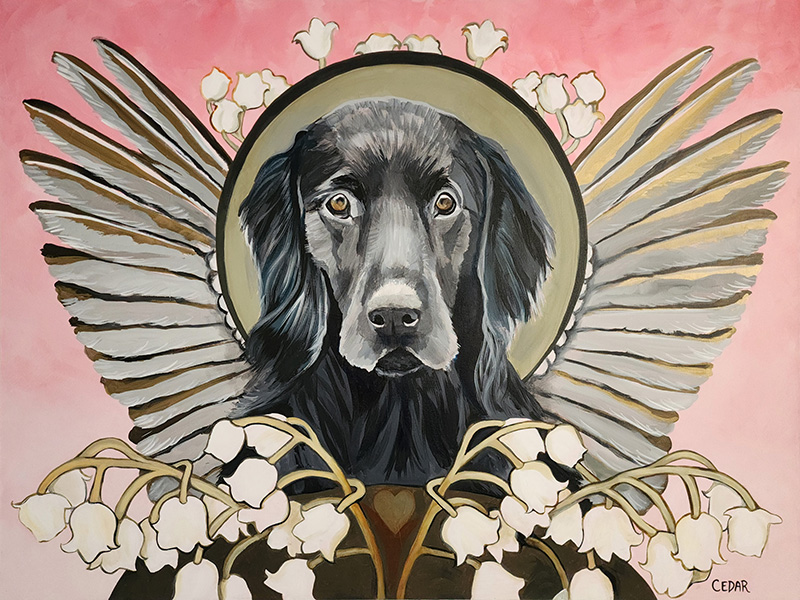
The Caregiver: Protects others from harm and provides for their needs.
The ultimate caregiver is human’s best friend, the dog. I chose to depict a beautiful flat coat retriever. The dove wings in the background represent love. Lily of the Valley flowers, shown larger than life in the foreground, symbolize kindness, caring, and the nurturing love of motherhood. The overall image is that of a guardian angel who protects and cares for others. The pink color of the background represents tenderness, comfort and hope.
The Explorer
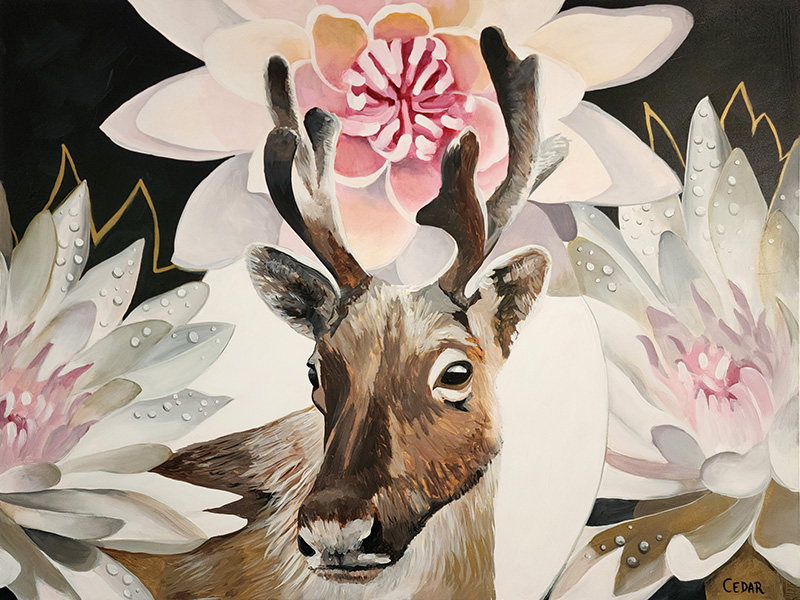
The Explorer: Has the freedom to explore, physically and mentally.
The caribou, like many similar herd animals, symbolizes the freedom of roaming the land far and wide. The lotus flowers symbolize freedom of the mind, a feeling of expansion and openness, releasing the attachment to a solid way of thinking, and becoming one with the universe. The freedom to explore means the removal of limitations and the possibility of traveling anywhere.
The Ruler
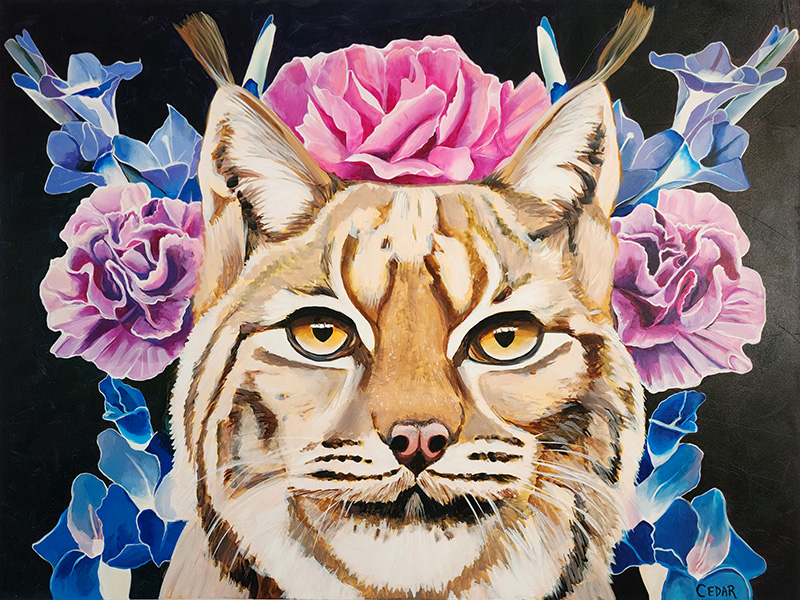
The Ruler: Exerts control over others and their environment.
The lynx, with its noble demeanor and intense golden eyes, symbolizes power and control. Wildcats in general: lions, tigers, etc., are used as symbols of royalty. The lynx wears a crown of gladiolus and carnations in shades of deep blue, purple, and magenta on a deep black background, giving a feeling of sleek opulence.
The Creator
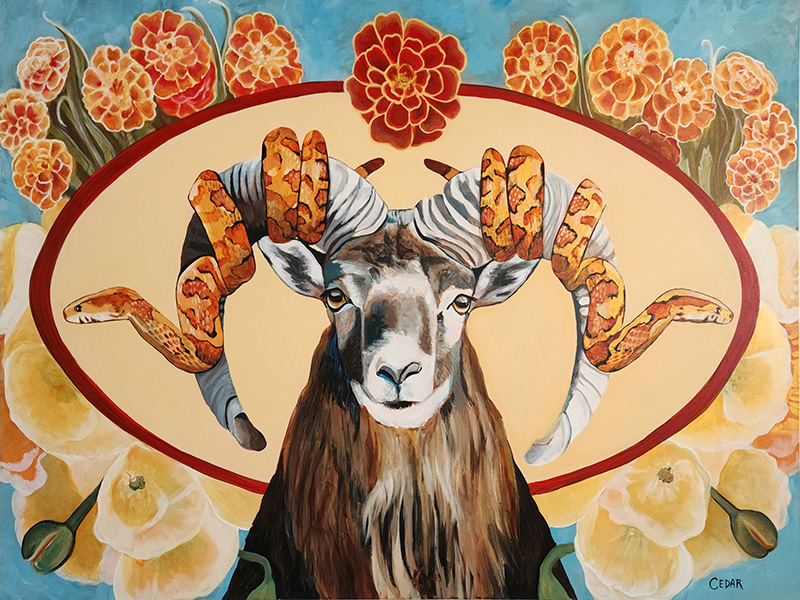
The Creator: Creates enduring value with innovation and beauty.
The goat is a symbol of fertility and abundance, to represent the fertile mind of a creative person. The serpent is one of the oldest and most widespread mythological symbols, and also represents fertility. Orange and yellow colors represent enthusiasm and creativity, so I chose to depict orange-colored corn snakes curled around the horns of the goat. Marigolds and golden poppies in the background, continuing the orange color scheme, are also symbols of creativity.
The Outlaw
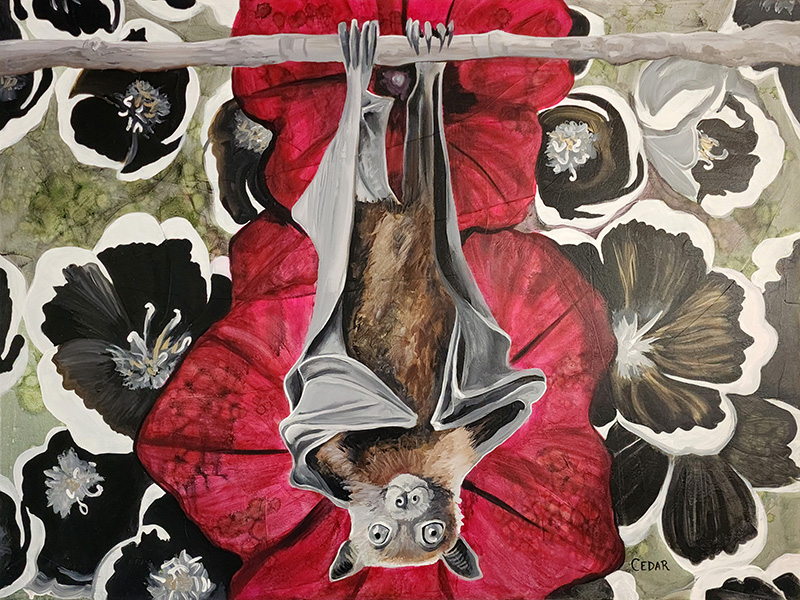
The Outlaw: Rejects conventions, embraces revolution and revenge.
The Outlaw defies convention to go their own way. Bats often represent death in the sense of letting go of the old and bringing in the new. They are symbols of transition. The red flowers behind the bat represent the intensity of the Outlaw’s bold convictions. Black clematis flowers, a symbol of rebellion, fill the background.
The Orphan
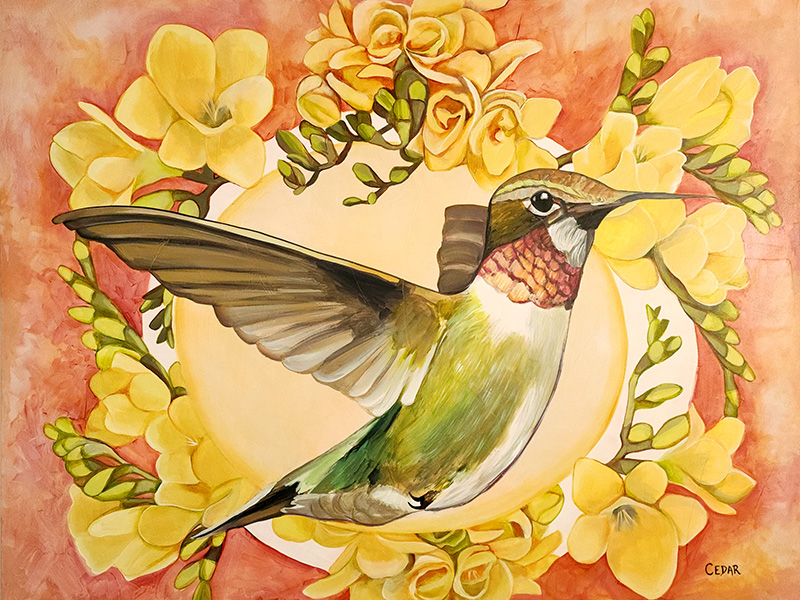
The Orphan aka the Regular Person: Connects with others through friendship.
In fiction writing, the Orphan, also known as the Regular Person or the Everyman/woman, is always someone’s friend. The Orphan is honest and hardworking. They’re happy to support and collaborate with others because they have a need to belong. These are the people who sustain a social network, connecting people to one another through friendship. The hummingbird, a friendly pollinator, represents this connection, and the background of yellow freesias are a symbol of friendship.
The Magician
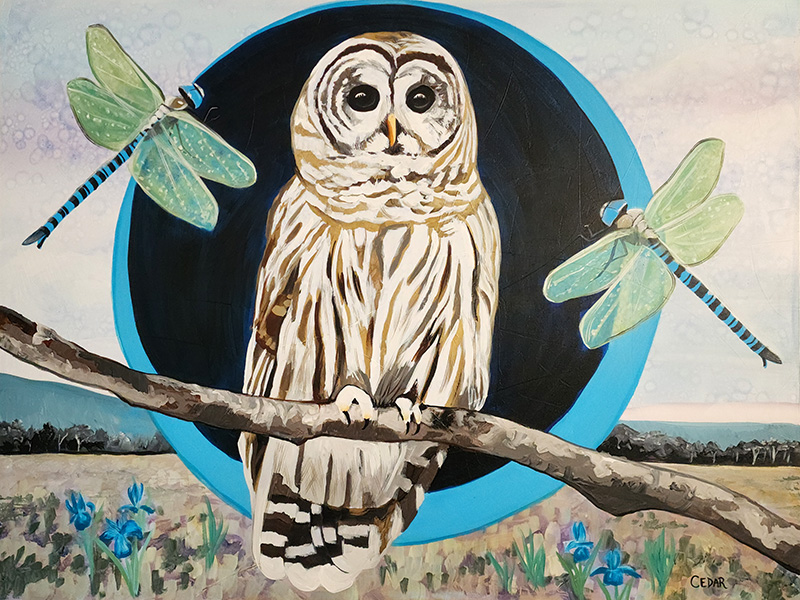
The Magician: Has a special knowledge of how the world works.
The owl is a widespread symbol of wisdom and knowledge, while dragonflies symbolize change, transformation, adaptability, and self-realization. The iris flowers in the background are another symbol of wisdom. In contrast to the Sage, which represents scholarly knowledge, the Magician represents the application of knowledge to make things happen; that is, to physically manifest things into being, in a way that appears to be like magic!
All of these paintings are 36″ x 48″, a scale that simply must be seen in person to be fully experienced.
